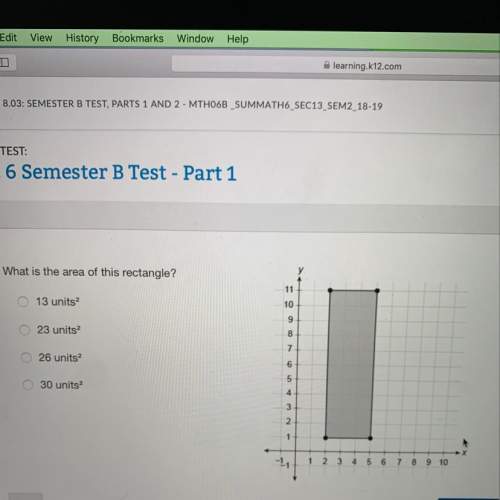
Mathematics, 01.01.2021 15:50 lovebunfan
X is carrying out a series of experiments which involve using increasing amounts of a chemical. In the first experiment he uses 6g of the chemical and in the second experiment he uses 7.8g of the chemical.
(i) Given that the amounts of the chemical used form an arithmetic progression, find the total amount of chemical used in the first 30 experiments. [4]
(ii) Instead it is given that the amounts of the chemical used form a geometric progression. X has a total of 1800g of the chemical available. Show that N, the greatest number of experiments possible, satisfies the inequality
1.3N ≤ 91.
and use logarithms to calculate the value of N.

Answers: 1


Another question on Mathematics

Mathematics, 21.06.2019 15:00
Translate the word phrase into a math expression. 15 fewer than the product of 4 and a number. (pls immediately)
Answers: 2


Mathematics, 21.06.2019 18:20
What is the y-intercept of the line given by the equation
Answers: 2

Mathematics, 22.06.2019 02:00
If the angle bisectors of a pair of opposite angles of a quadrilateral are the opposite sides of a parallelogram formed by the two angle bisectors and two sides of the quadrilateral, is the quadrilateral always a parallelogram? explain your answer.
Answers: 3
You know the right answer?
X is carrying out a series of experiments which involve using increasing amounts of a chemical. In t...
Questions


Mathematics, 21.10.2020 20:01


Biology, 21.10.2020 20:01


Health, 21.10.2020 20:01


Mathematics, 21.10.2020 20:01

Mathematics, 21.10.2020 20:01

Mathematics, 21.10.2020 20:01

Mathematics, 21.10.2020 20:01

History, 21.10.2020 20:01




Social Studies, 21.10.2020 20:01

Mathematics, 21.10.2020 20:01

Mathematics, 21.10.2020 20:01






